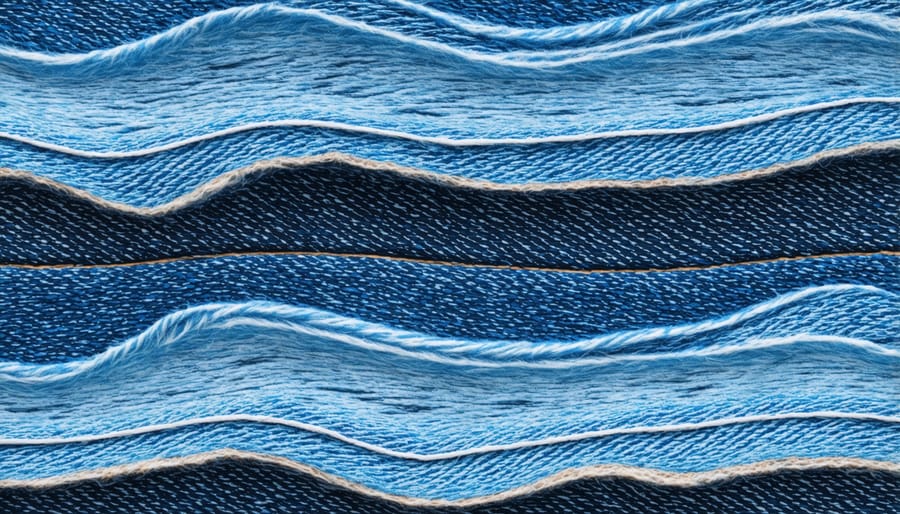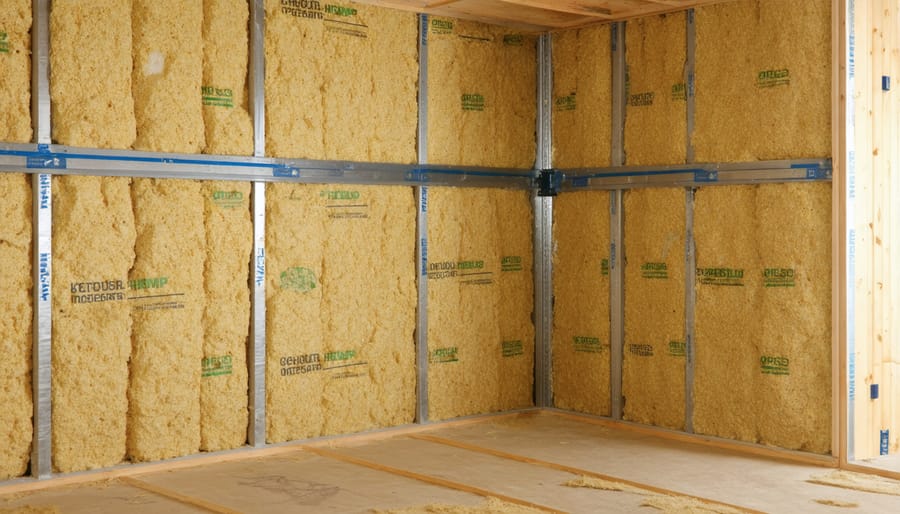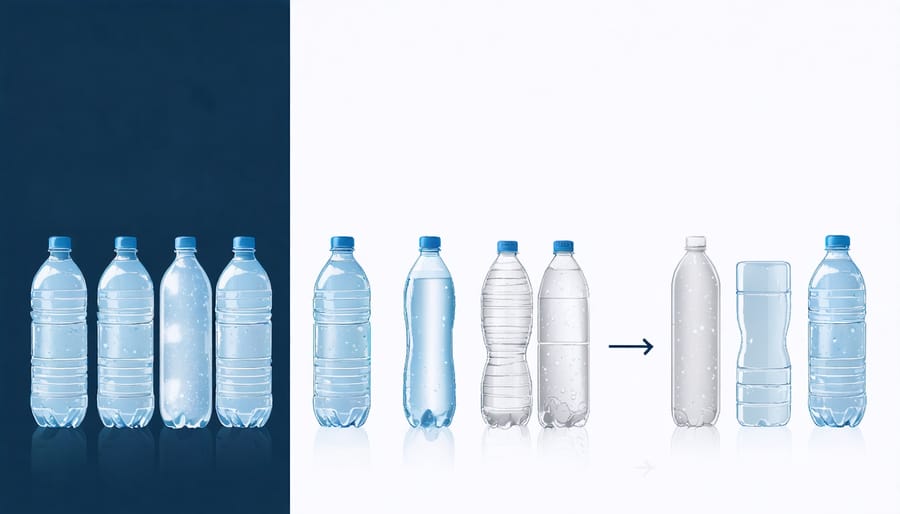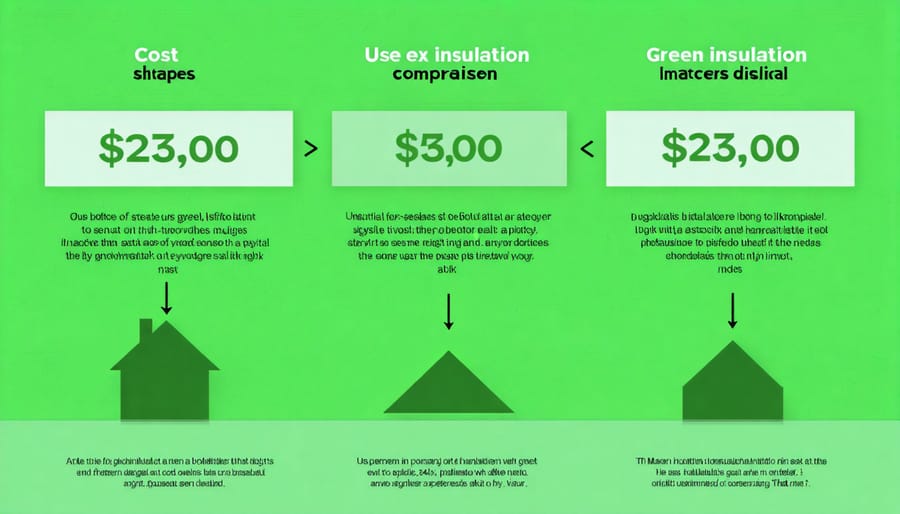Transform your home’s environmental impact and energy efficiency with innovative green insulation technologies that revolutionize traditional building practices. Modern eco-friendly insulation solutions combine cutting-edge materials science with sustainable principles to create an energy-efficient home design that dramatically reduces both carbon footprint and utility costs.
Natural fiber insulation materials like hemp, cotton, and sheep’s wool now rival traditional fiberglass in performance while offering superior sustainability credentials. These renewable resources require minimal processing energy, contain no harmful chemicals, and can be safely installed without protective equipment. Additionally, many green insulation options incorporate recycled materials, from shredded denim to cellulose made from post-consumer paper products, effectively diverting waste from landfills while creating high-performance thermal barriers.
Beyond material selection, advanced installation techniques like dense-packing and strategic air-sealing maximize insulation effectiveness, potentially reducing heating and cooling costs by up to 50%. These modern methods, combined with innovative products like aerogel-based insulation and phase-change materials, demonstrate how sustainable solutions can outperform conventional options while protecting both our environment and your wallet.
Natural Fiber Insulation: The Earth-Friendly Choice
Cotton and Denim: From Blue Jeans to Better Insulation
Remember those old blue jeans in your closet? They might just be your next eco-friendly insulation solution! As one of the most innovative sustainable building materials, recycled denim and cotton insulation is revolutionizing how we think about home comfort.
Made from post-consumer denim and cotton fibers that would otherwise end up in landfills, this insulation option offers impressive R-values comparable to traditional fiberglass insulation. The best part? It’s completely free from harmful chemicals and irritants, making it safe to handle during installation – no special protective gear required!
The manufacturing process is simple: old jeans and cotton materials are shredded, cleaned, and treated with a natural fire retardant (usually borate). The resulting material is then formed into batts that are easy to install between wall studs, in attics, or under floors.
Beyond its eco-friendly credentials, cotton insulation offers excellent sound absorption properties, making it perfect for home theaters or music rooms. It’s naturally resistant to pests, mold, and mildew, and doesn’t settle over time like some other insulation materials.
While the upfront cost might be slightly higher than traditional options, many homeowners find the benefits – including improved indoor air quality and reduced environmental impact – well worth the investment. Plus, some locations offer tax incentives for using eco-friendly insulation materials, helping offset the initial costs.

Sheep’s Wool: Nature’s Perfect Insulator
When it comes to sustainable insulation options, sheep’s wool stands out as nature’s own solution to keeping spaces warm in winter and cool in summer. This remarkable material has been keeping sheep comfortable in extreme conditions for millennia, and now it’s making its way into our homes as an eco-friendly insulation choice.
Sheep’s wool offers exceptional thermal performance, naturally regulating humidity and absorbing harmful chemicals like formaldehyde from the air. Unlike synthetic materials, wool fibers can absorb up to 30% of their weight in moisture without losing insulating properties, helping prevent condensation and mold growth in your walls.
Installation is straightforward and safe – no protective gear required! The wool comes in batts or rolls that can be easily cut to size and fitted between wall studs, floor joists, or roof rafters. Since it’s naturally fire-resistant and doesn’t contain harmful chemicals, you won’t have to worry about off-gassing or health risks during or after installation.
While sheep’s wool insulation typically costs more than conventional options, its longevity and performance make it a worthwhile investment. The material can last 50+ years without degrading, and at the end of its life, it’s completely biodegradable. For eco-conscious homeowners, the combination of superior performance, safety, and sustainability makes sheep’s wool an excellent choice for home insulation.
Plant-Based Insulation Solutions
Hemp and Straw: Ancient Materials, Modern Benefits
When it comes to sustainable insulation, sometimes the best solutions are rooted in ancient wisdom. Hemp and straw-based insulation materials are perfect examples of how traditional building materials are making a remarkable comeback in modern green construction.
Hemp insulation, made from the stalks of industrial hemp plants, offers impressive thermal performance while being completely biodegradable. It naturally regulates humidity and is resistant to mold and pests, making it an excellent choice for both new builds and renovations. What’s particularly appealing about hemp is its negative carbon footprint – the plant actually absorbs more CO2 during growth than is used in the manufacturing process.
Straw bale insulation, another time-tested option, has been used for centuries and is experiencing a renaissance in eco-friendly construction. Modern straw insulation comes in compressed panels or bales, offering excellent R-values comparable to conventional materials. It’s particularly effective in wall construction, where its thickness provides superior soundproofing as well as thermal insulation.
Both materials share some compelling benefits:
– Naturally fire-resistant when properly installed
– Excellent moisture management
– Completely renewable and biodegradable
– Low embodied energy in production
– Support local agricultural economies
While initial costs might be slightly higher than conventional options, the long-term environmental benefits and energy savings make hemp and straw insulation increasingly attractive choices for eco-conscious homeowners.

Cork and Cellulose: Sustainable Stalwarts
When it comes to natural insulation champions, cork and cellulose stand out as true sustainable heroes. Cork, harvested from the bark of cork oak trees without harming them, offers excellent thermal and acoustic properties while being naturally fire-resistant and water-repellent. What’s particularly amazing is that cork trees can be harvested every 9-12 years, making it a genuinely renewable resource.
Cellulose, typically made from recycled newspaper and other paper products, is another eco-friendly superstar. It’s treated with non-toxic borate compounds to resist fire, mold, and pests, while keeping up to 85% of heat from escaping your home. DIY enthusiasts will love that cellulose can be easily blown into existing walls or attics, making it perfect for retrofitting projects.
Both materials score high on the sustainability scale. Cork production actually helps preserve cork oak forests, which are vital ecosystems in Mediterranean regions. Meanwhile, cellulose puts paper waste to good use, with some products containing up to 85% recycled materials.
Pro tip: While cork tends to be pricier upfront, its durability means you won’t need to replace it for decades. Cellulose, on the other hand, offers a more budget-friendly option without compromising on environmental benefits. For the best results, consider having cellulose professionally installed to ensure proper density and coverage.
Recycled Material Innovations
Recycled Plastic Insulation: From Waste to Walls
Transform your old plastic bottles and packaging into effective home insulation? It’s not just possible – it’s becoming increasingly popular! Recycled plastic insulation takes post-consumer plastics that would otherwise end up in landfills and transforms them into high-performance insulation materials.
The process involves cleaning and processing various plastic waste items, from water bottles to food containers, into fine fibers that are then bonded together to create insulation batts or loose-fill materials. These recycled materials perform surprisingly well, offering R-values comparable to traditional fiberglass insulation while keeping plastics out of our oceans and landfills.
One of the biggest advantages of recycled plastic insulation is its moisture resistance. Unlike some natural materials, it won’t rot or develop mold when exposed to humidity. It’s also naturally fire-resistant and doesn’t require additional chemical treatments, making it a safer choice for your home.
Installation is straightforward and similar to working with traditional insulation materials. Whether you’re insulating walls, attics, or crawl spaces, recycled plastic insulation can be cut to size and fitted between joists and studs. Many DIY enthusiasts find it easier to handle than fiberglass because it doesn’t produce irritating airborne fibers.
While the upfront cost might be slightly higher than conventional options, the environmental benefits and long-term durability make it a worthwhile investment for eco-conscious homeowners.

Glass and Mineral Wool: The Recycled Revolution
Did you know that the insulation in your walls might contain materials from your recycling bin? Glass and mineral wool insulation represents one of the most successful recycling stories in green building materials, turning everyday waste into highly effective home insulation.
Glass wool, also known as fiberglass insulation, can contain up to 80% recycled glass content. Those empty bottles and jars from your kitchen are melted down and spun into fine fibers that trap air pockets, creating an excellent thermal barrier. This process not only diverts waste from landfills but also requires less energy to manufacture compared to creating new glass products from scratch.
Mineral wool, sometimes called rock wool, follows a similar eco-friendly path. It’s made from recycled slag from steel mills and other industrial processes, combined with natural rock. The result is a dense, fire-resistant insulation material that performs exceptionally well in both hot and cold conditions.
Both materials offer impressive R-values, making them highly effective at maintaining comfortable indoor temperatures. They’re also naturally fire-resistant and can help with soundproofing. Best of all, these materials are readily available at most hardware stores and are familiar to most contractors, making them an accessible choice for green renovation projects.
Installing these materials is straightforward for DIY enthusiasts, though proper safety gear is essential due to the fine fibers they contain.
Installation and Cost Considerations
DIY vs. Professional Installation
When it comes to installing green insulation, you have two main options: taking the DIY route or hiring professionals. While both approaches have their merits, your choice should depend on your skill level, available time, and the complexity of the project. For a basic understanding of what’s involved, check out our room-by-room insulation guide.
DIY installation can save you money and gives you complete control over the process. It’s particularly suitable for projects involving loose-fill cellulose, cotton batts, or sheep’s wool insulation in accessible areas like attics. You’ll need basic tools, safety equipment, and careful attention to detail. However, be prepared to invest time in learning proper installation techniques and safety protocols.
Professional installation, while more expensive, offers several advantages. Experts bring specialized equipment, extensive experience, and often warranties for their work. They’re particularly valuable for spray foam applications, complex wall cavity installations, or when dealing with unusual architectural features. Professionals can also identify potential issues like moisture problems or structural concerns that might affect insulation performance.
Consider starting with simpler DIY projects in easily accessible areas. For more challenging spaces or if you’re unsure about proper installation techniques, investing in professional installation could save you money and headaches in the long run. Remember, proper installation is crucial for achieving maximum energy efficiency and comfort benefits.
Cost Analysis and ROI
Investing in green insulation is one of the most impactful eco-friendly home upgrades you can make, offering substantial returns over time. While initial costs may be higher than traditional options, the long-term savings are impressive.
Let’s break down the numbers: Installing green insulation in an average 2,000-square-foot home typically costs between $3,000 and $8,000, depending on the material chosen. Natural wool insulation runs about $1.50-2.50 per square foot, while recycled denim costs around $1.00-2.00 per square foot. Cellulose, made from recycled paper products, is often the most budget-friendly at $0.60-1.80 per square foot.
The good news? Most homeowners recover their investment within 3-5 years through reduced energy bills. You can expect to save 15-30% on heating and cooling costs annually. For a home with $200 monthly energy bills, that’s up to $720 in savings per year!
Additional financial benefits include:
– Potential tax credits and rebates (check your local programs)
– Increased home value (up to 3-5%)
– Lower maintenance costs due to durability
– Reduced carbon footprint, leading to lower environmental impact costs
Remember, while premium green materials might cost more upfront, their superior performance and longevity often make them more cost-effective in the long run. Plus, many local utilities offer incentives that can help offset initial costs.

As we’ve explored throughout this article, green insulation technologies offer exciting opportunities to create more sustainable, energy-efficient homes while helping to reduce your carbon footprint. From recycled denim and cork to sheep’s wool and cellulose, these eco-friendly alternatives prove that effective insulation doesn’t have to come at the environment’s expense.
Remember that choosing green insulation isn’t just about being environmentally conscious – it’s a smart investment that can lead to significant energy savings, improved indoor air quality, and enhanced home comfort. Whether you’re building a new home or upgrading your existing insulation, these sustainable options offer comparable or even superior performance to traditional materials while minimizing environmental impact.
Before making your final decision, consider factors like your local climate, budget, and specific insulation needs. Don’t hesitate to consult with green building professionals who can help you make the most informed choice for your situation. Many localities also offer incentives and rebates for choosing eco-friendly insulation, making the switch even more attractive.
By embracing these innovative insulation solutions, you’re not just creating a more comfortable living space – you’re contributing to a more sustainable future. Start small if needed, perhaps by insulating one room or area of your home, and expand your green initiatives over time. Every step toward sustainable living matters, and choosing eco-friendly insulation is an excellent place to begin your journey toward a greener, more energy-efficient home.
